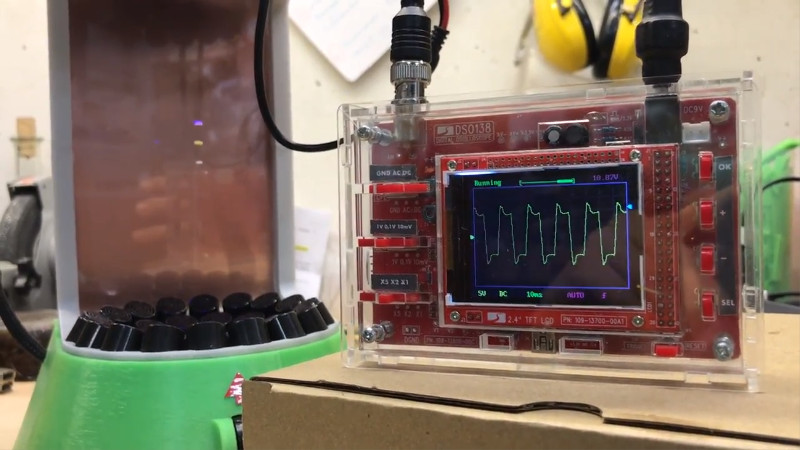Levitation has a way of arousing curiousity and wonder wherever it appears. There’s a multitude of ways to do it, each with their own strengths and weaknesses and ideal use cases. [Julius Kramer] tried his hand at acoustic levitation, and decided to share his build.
The build relies on an astounding number of ultrasonic transducers – 72, in fact. The device operates at 40 kHz to be well above the human range of hearing. 36 each are placed in the top and bottom shells of the device’s 3D printed chassis. Through careful construction, the transducers are placed an integer multiple of half the wavelength apart. This allows the device to create a standing wave, with several low-energy nodes in which small objects can be levitated. In this case, [Julius] uses small scraps of styrofoam, but notes that water droplets can also be used if one is careful to avoid spilling any on the electronics.
The transducers are energised with a square wave generated by an Arduino Nano. This allows the possibility of the frequency and phase of the wave to be altered, which can help tune the device and allow some movement in the vertical axis. Unfortunately, movement in the other axes isn’t possible as the transducers appear to be connected in parallel. However, this could be a good upgrade in a later revision.
This project shows that a device relying on incredibly precise measurement and control can now be constructed at home with a 3D printer and some off the shelf electronics.
Now that you’ve whet your whistle, perhaps you’d like to tackle laser levitation?
[Thanks to Baldpower for the tip!]
















Is 72 really an astounding number? That’s not that many, and they’re small
I would like to see his “failed” bin on the way to this. :)
Random question does half-integer make sense. Could I describe this as half integer multiples of the wavelength?
Yes, all it means is 1/2, 1, 3/2, 2, 5/2,…n/2, so you can describe it as half-integer multiples.
The TinyLev was created by Asier Marzo, Adrian Barnes, and Bruce Drinkwater at the University of Bristol. The paper (open access!), shown in the YouTube video can be found here: https://doi.org/10.1063/1.4989995, and the Instructables page to build your own is here, for reference: https://www.instructables.com/id/Acoustic-Levitator/
Happy levitating! :)
indeed, we are quite happy that people replicate, modify or do anything with TinyLev, but we would have appreciated if the author had not only linked the paper but also the Instructables which contains the step by step assembly video, links to the components and more explanations.
Neighbor dog likes it.
Anyone know what transducer that is?
i am looking for the arduino scetch for the tinylev